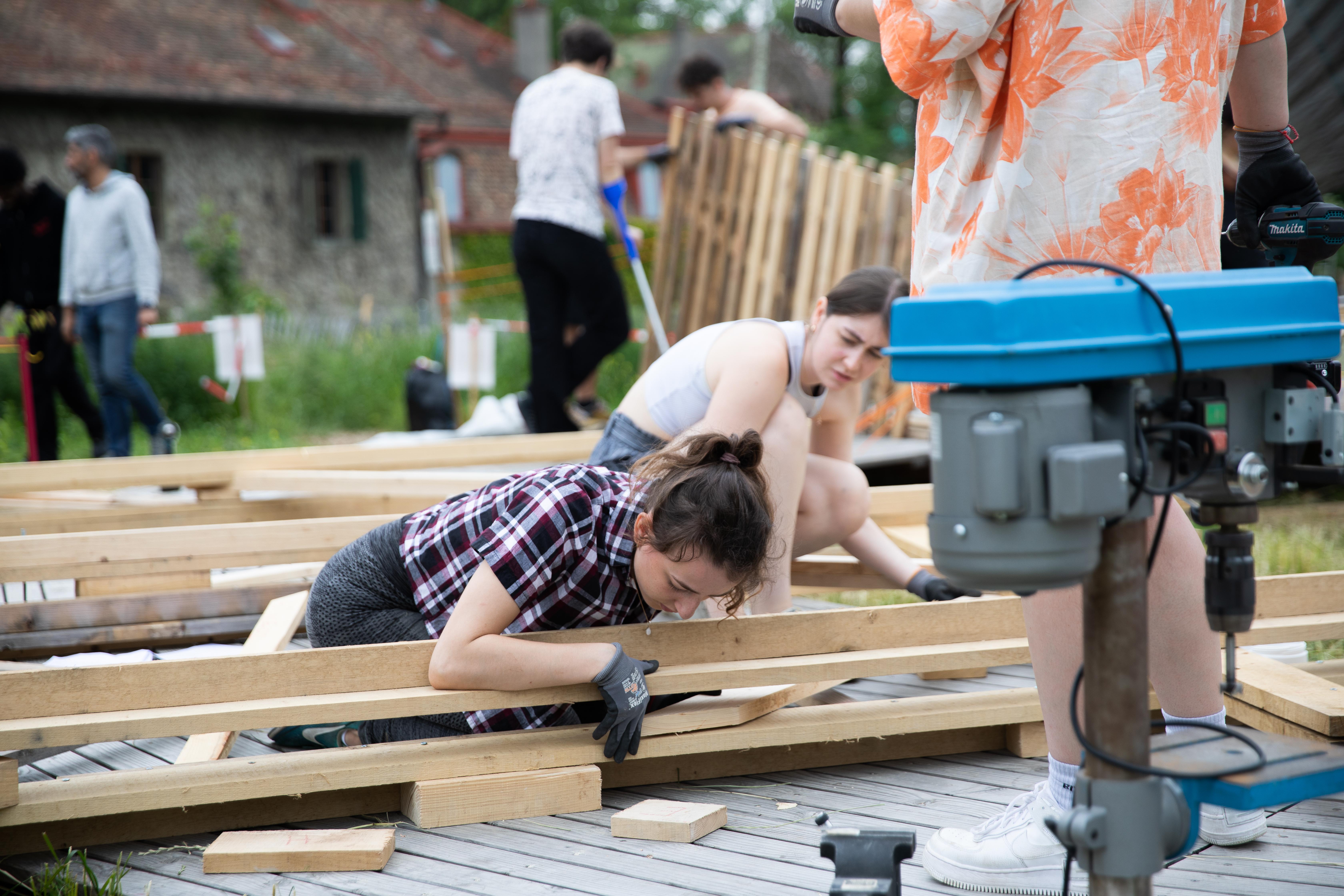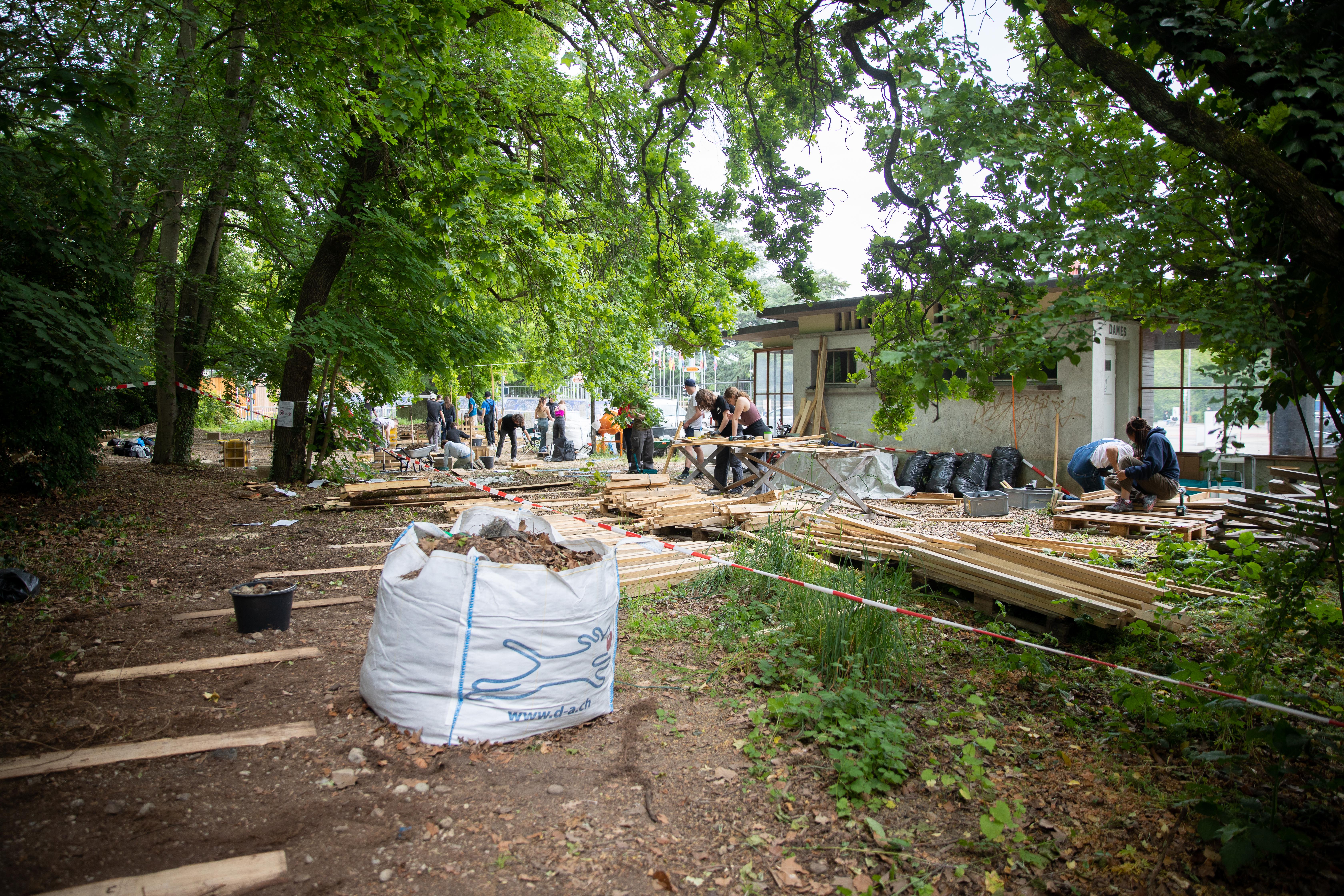
ALICE building site started in May 2023 at the International Red Cross and Red Crescent Museum .©2023 EPFL/M.Geiser-CC-BY-SA 4.0
EPFL architecture students have designed lightweight structures made from recycled wood and earth for three public spaces in Geneva: Parc Rigot; the entrance to Parc des Feuillantines; and the gardens of the International Red Cross and Red Crescent Museum.
Since this summer, Genevans have had new places to relax in the shade near Place des Nations, at the heart of the city's international district. The wood and earth structures were built earlier this year during a group project involving 220 first-year architecture students at EPFL. The new intake of students who started the School in September will update and expand these structures.
The project is part of an initiative led by the Design Studio on the Conception of Space (ALICE) at EPFL's School of Architecture, Civil and Environmental Engineering (ENAC). The initiative was introduced eight years ago and Geneva has hosted the students' creations for the past four years. Budding architects get a unique opportunity to combine theory and practice by working on a project from end to end - from the initial design through to full-scale construction - over the course of a year. The students gain unparalleled insights into the challenges that come with working as a team, such as learning to let things go and adapting to change.

The three structures in International Geneva were built under the initiative's Résonance cycle - a new, 3-year cycle that focuses on building materials and their reuse. It was introduced by professors Dieter Dietz and Daniel Zamarbide and architect Teresa Cheung, following their previous cycles on the built environment. All structures in this cycle will be made from wood and rammed earth, with the wood sourced from either demolished buildings or local sawmills, and the earth from nearby construction sites.
In the past, students had been tasked with designing and building pavilions and larger structures. Now, these have given way to smaller, scattered installations that can be adapted to keep pace with evolving needs and practices for public spaces.
International Red Cross and Red Crescent Museum
ALICE has a long-standing partnership with the International Red Cross and Red Crescent Museum. This year's students revamped most of the structures built in 2022 at the entrance to the museum and in the surrounding grounds. For instance, they added a roof to the first structure that can be seen from Avenue de la Paix and reinforced its rammed-earth wall. They also redesigned the bleachers around a tree in order to make better use of the shade. The young architects added landscaping elements in keeping with the new layout of the museum's gardens, and installed an aqueduct that carries rainwater from the flags above the building's entrance to a water tower.
Parc Rigot
Parc Rigot, recently redeveloped, is a popular place to relax and unwind in one of Geneva's busiest neighborhoods. Here, the ALICE students built a new entrance on Avenue de la Paix so that visitors can access the park from the north during forthcoming work on the adjacent tram lines. Inside the park, new rammed-earth seats surround an ancient oak tree, offering somewhere to shelter from the sun's glare. A path leads from this space to a public square featuring a newly installed wooden structure, which again serves as a place to stay cool on a hot summer's day. The students also made use of the park's abundant vegetation to create additional footpaths leading from Place des Nations. This renovation work, which is backed by Geneva Canton, is part of ongoing efforts to enhance the park, which include planting more vegetation and providing more spaces for socializing.

Parc des Feuillantines
Nearby, the students set about converting an unused plot of land at the entrance to Parc des Feuillantines on the corner of Avenue de la Paix - between the kiosk and Place des Nations - into a recreational space. They installed wooden platforms and rammed-earth columns, all of different sizes, which have transformed the topography of the space and turned it into a place to relax and have fun.







